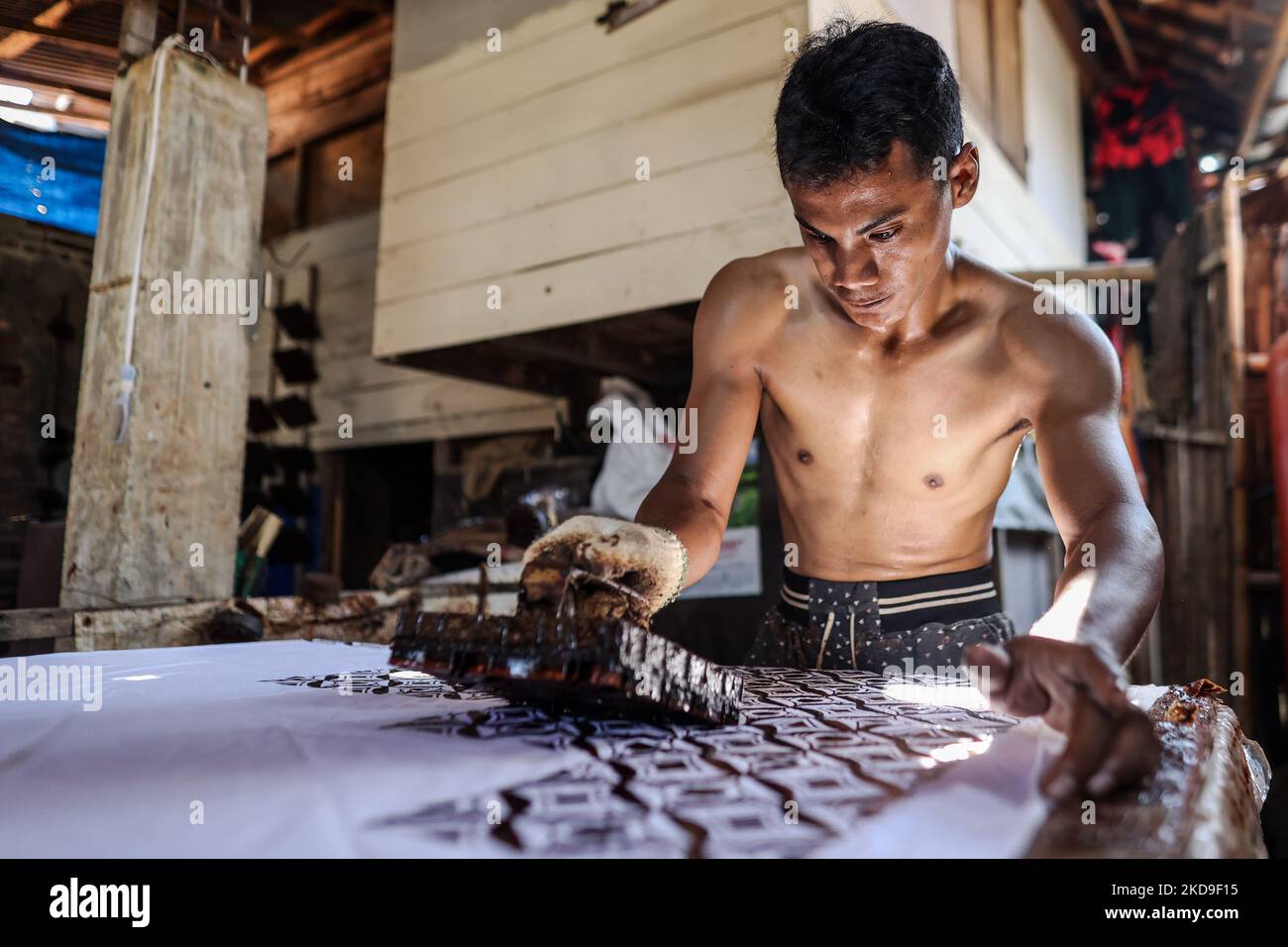A worker uses copper stamps to imprint patterns onto traditional Javanese textile called batik at low-lying Jeruk Sari neighborhood in coastal Pekalongan, Central Java, Indonesia, June 5, 2021. An area in which almost every available space is used for batik production, with a high level of poverty, vulnerable to both rising sea levels and high river peak flows. Pekalongan is a city known for batik, a traditional Indonesian method of using wax to resist water-based dyes to depict patterns and drawings, usually on fabric. This textile has traditionally been crafted by hand in family workshops an

Image details
Contributor:
NurPhoto SRL / Alamy Stock PhotoImage ID:
2KD9F15File size:
38.6 MB (1.1 MB Compressed download)Releases:
Model - no | Property - noDo I need a release?Dimensions:
4500 x 3000 px | 38.1 x 25.4 cm | 15 x 10 inches | 300dpiDate taken:
6 June 2021Photographer:
Garry LotulungMore information:
This image could have imperfections as it’s either historical or reportage.
A worker uses copper stamps to imprint patterns onto traditional Javanese textile called batik at low-lying Jeruk Sari neighborhood in coastal Pekalongan, Central Java, Indonesia, June 5, 2021. An area in which almost every available space is used for batik production, with a high level of poverty, vulnerable to both rising sea levels and high river peak flows. Pekalongan is a city known for batik, a traditional Indonesian method of using wax to resist water-based dyes to depict patterns and drawings, usually on fabric. This textile has traditionally been crafted by hand in family workshops and small-scale cottage industries. Today, young Pekalongan residents are increasingly confident that they can aspire to reputable work and a reasonable income without having to join the migration to Indonesia’s larger cities. (Photo by Garry Lotulung/NurPhoto)